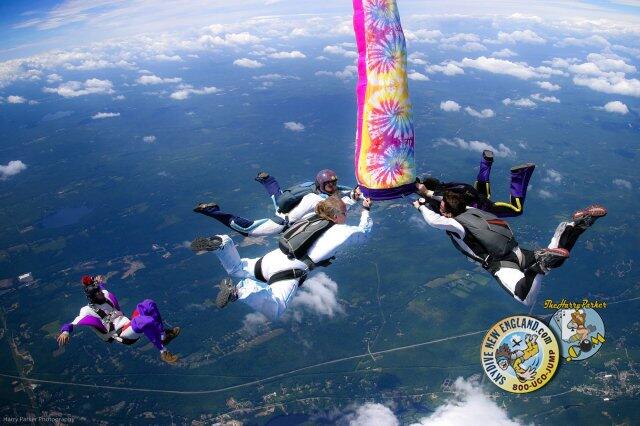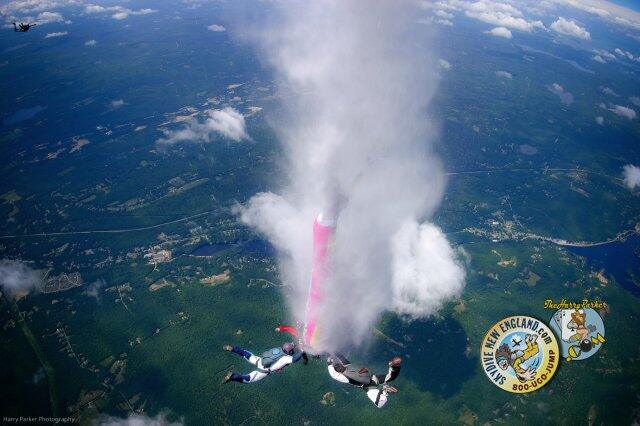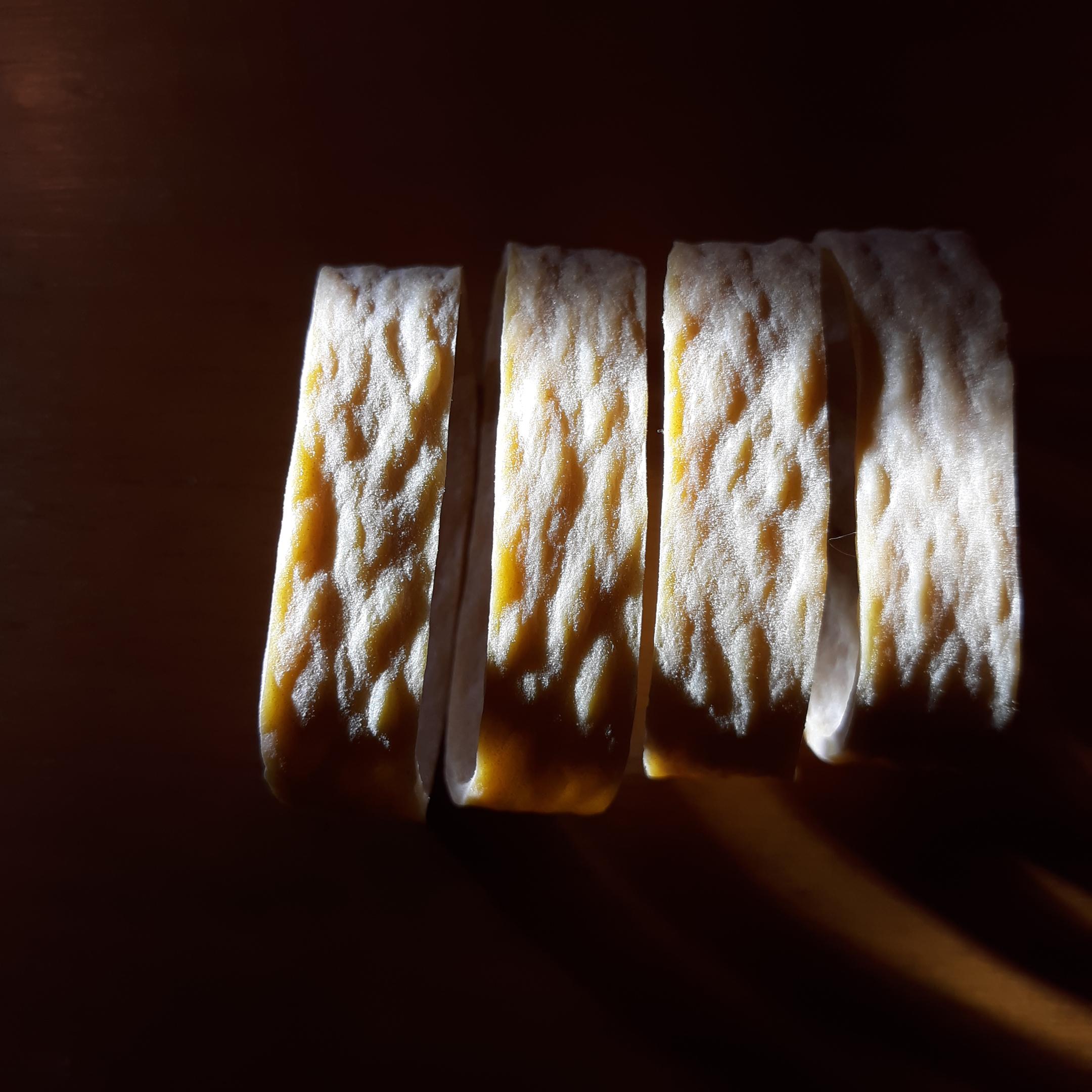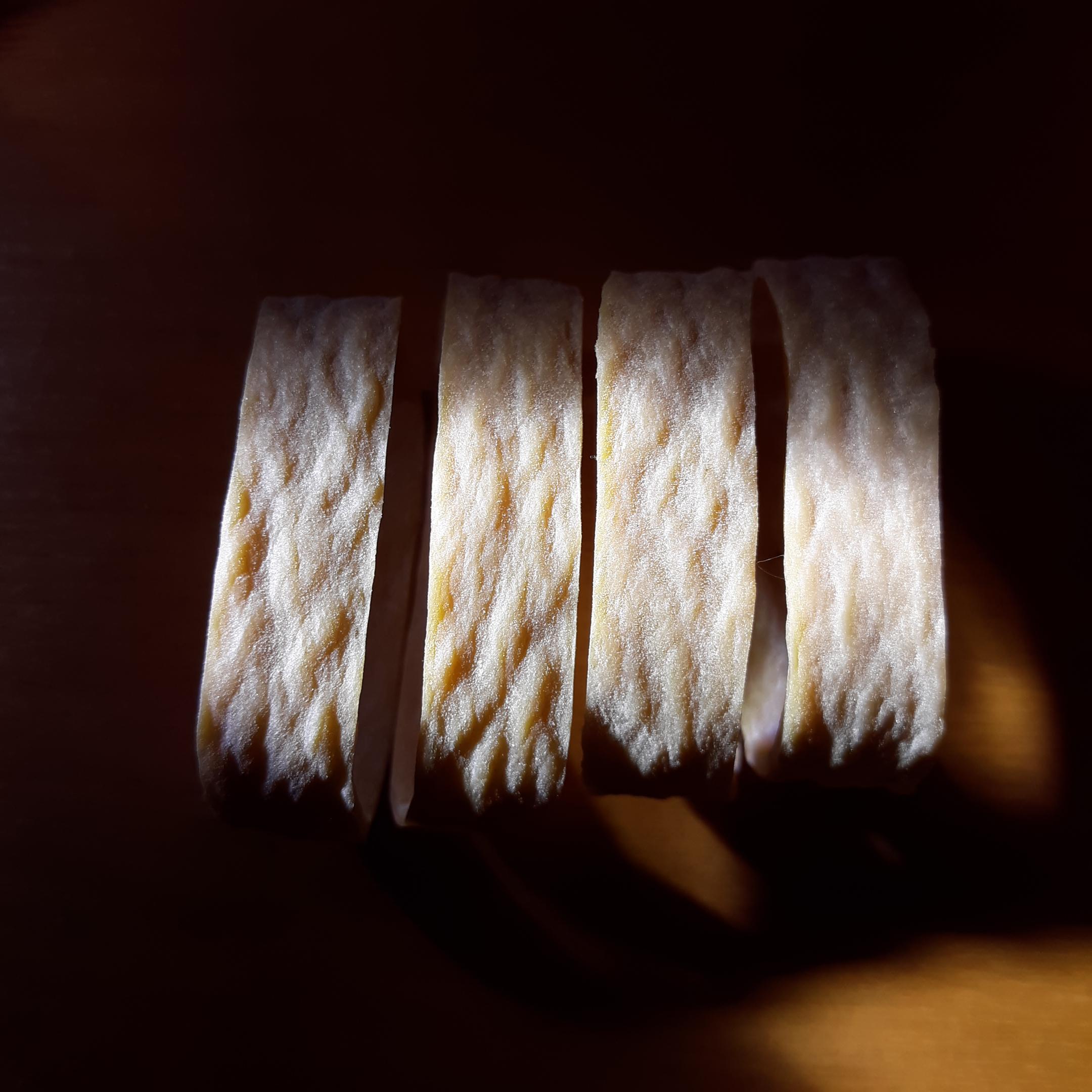
WV177RG
-
Content
109 -
Joined
-
Last visited
-
Feedback
0%
Posts posted by WV177RG
-
-
Kinesthesia was a great training video in the early 90s. Skydive 100: Basic Body Flight was also terrific. Produced by Tom Piras and Rob Laidlaw of Skydive University in DeLand, their video was supplemented by an excellent, comprehensive workbook that breaks down the fundamentals of relative work (formation skydiving) into easily digested, modular building blocks for study, ground and aerial exercises. If you can't find a copy online, you might contact Skydive U for information. First-class coaching program to help you transition from recent A-license to safe, skilled formation skydiver.
-
-
David's ash dive: quintessential David infused with 10 pounds of colored glitter-including lots of his favorite purple-by his request. Wretched weather opened briefly, yielding spectacular visuals aloft and for his extended family on the ground. His glitter trail hung in the sunlit sky for several minutes. Clouds swallowed the blue hole shortly after we landed resulting in a biblical deluge. Just as suddenly, the black clouds evaporated revealing an incredibly vivid David-rainbow in his honor. We believe his ashes and glitter acted as condensation nuclei, seeding the clouds and favoring us with one last brilliant swath of his color across the sky above the dz and family he loved so dearly. Xxxooo, M+J
-
 3
3
-
-
Good morning, David. Eleven years since you were swept away from us. We honor you every day, determined to pay your lovingkindness forward. Attaching a few photos* today, bittersweet memories of the extraordinary life we were privileged to share with each other. Sweet Chloe joined Alice, Abby and you this year…Les Girlz are now none. Please look after them for us; they loved you so. Until we meet again, dear friend. Xxxooo, Marianne and Jim
*In your glory on OWB’s “Friends of David Trip to Italy” enroute Peppino’s North End restaurant, Antico Forno. [As we lovingly mistranslated it: “Old People F**king.
 ]
]
-
 2
2
-
-
Thanks for these recommendations, guys. Prime Suspect, starring Helen Mirren, is another great British police procedural. Really gritty character studies. (DVD, Netflix+)
Bonus evening: Sleuth with Laurence Olivier and Michael Caine. Terrific production, though not a police drama.
-
 1
1
-
-
[Classic Gary Larson/Far Side cartoon]
I've jumped several (unpressurized) aircraft in which altimeters were mounted on the aft bulkhead for skydiver reference. Since no one was assigned to ensure they were zeroed before takeoff--assuming we were taking off and landing at the same field elevation--I always zeroed the cabin altimeter during boarding, then checked against my own on the climb to altitude.
Specialty jumps: check with the pilot before takeoff. Flying gliders years ago, we zeroed our altimeters like skydivers for local flights (AGL-Above Ground Level) but used the current barometric pressure setting (MSL-Mean Sea Level) for cross country flights. FAA balloon flying handbook: "Figure 6-10. The altimeter should be set to barometric pressure*, if
available, or to the field elevation.**"*MSL/**AGL
-
Ask your instructors. +1 on football receiver's gloves. Also, baseball batting gloves. Avoid thick flaps where they fasten...possible snag hazard. Practice locating and gripping your handles, etc., with your gear on. Last pair I bought were too slippery when I tried them with my gear. A few seconds with fine grit sandpaper and they've gripped fine ever since. Try end of season clearance sales and put the savings toward an altimeter, helmet...
Congratulations on passing your Level 6!
-
 1
1
-
-
Excerpt from the PARACHUTE from balloons to skydiving James R. Greenwood/© 1964/E.P. Dutton & Co., Inc.
"Champions and Showmen:Born in 1939 in Shawnee, Oklahoma, also the birthplace of Astronaut Leroy Gordon Cooper, Jim Arender typifies the all-American-boy image. He entered the Army after a year of college as a premed student, and by choice wound up in the 82nd Airborne Division.In 1958 he became a member of the original Strategic Army Corps (STRAC) parachute team formed at Fort Bragg. And two years later he participated in America’s first successful six-man baton pass from 30,000 feet. By the time he had fulfilled his military obligation, Jim Arender had won a host of parachuting awards and honors.As a civilian, Arender competed as a member of the United States team in the 1961 international invitational meet at La Ferté-Gaucher, France. The team swept all five first-place trophies, the best showing ever made by an American team in world parachuting up to that time.Probably Jim Arender’s most significant triumph so far in competition was winning the world overall parachuting championship in the men’s division at the 1962 international event in Orange, Massachusetts.”Jim Arender and Muriel Simbro (cited earlier in this thread)Photo credits: Bob Buquor--See also: Bob Buquor Memorial Star Crest Awards-
 1
1
-
-
Skydiving's not for everyone. After waiting 31 years, I joined a group of 16 planning our first jumps...13 backed out. Second try we gathered 14...11 backed out. (Common story.) So I paid for my entire AFF course up front and never looked back.
Embrace your skydiving community and allow them to do the same for you. My greatest blessing entered my life through skydiving.
Blue skies...fly fast, fly safe!
-
 2
2
-
-
A Memorial Day tribute to USAF veteran and skydiving pioneer, Nate Pond (D-69). From his 1950s parachuting experiments with his dad, Sebastian “Batch” Pond at Good Hill Farm in CT, through his contributions to Parachutes Incorporated, the first commercial sport parachuting center at Orange, MA, US Parachute Team, Chief Pilot for OSPC and the 1962 World Championships, as a style and accuracy competitor and the first test jumper for Pioneer Parachute Company, his impact on the development of sport parachuting was tremendous.
Nate balanced supreme airmanship with an uncanny instinct for practical engineering, smashing the envelope and redefining the limits of possible. He was one of the most gifted stick and rudder pilots I’ve ever flown with.
We were privileged to meet Nate’s lovely wife Jill at last November’s SRO funeral service. Townsfolk told story after story of the Pond family’s lifelong generosity to neighbors and community…we added another dimension, describing his central role in the history of sport parachuting.
Nate Pond stories of narrow escapes and miraculous saves are legion. This episode from my days at Precision Airlines sums up how many of us felt about him:
Nate routinely butted heads with our equally crusty check airman, Ron H, himself a respected Vietnam vet who reportedly brought home two C-130s severely crippled by enemy fire, saving both crews and aircraft. Despite diametrically opposed views toward regulations, procedures and authority, these guys held a grudging respect for each other. Nate didn’t mind getting busted…he enjoyed the time off to go skiing during his suspensions before passing another “remedial checkride” with his counterpart. Ron confessed the true measure of his respect for Nate one day over coffee at Boston/Logan Airport: “Of course Nate passed his checkride again. I just wish he’d do the right thing in the first place. On the other hand, if the airplane were on fire with the weather at or below minimums, nowhere else to go and my family riding in the back, there’s no one else I’d rather have flying left seat.”
Thank you for your service to your country and to sport parachuting, Nate.
Re: D-69: Nate once told me the day came when it was time to assign a dozen or so numbers for the first round of D Licenses. Lew Sanborn was awarded D-1, Jacques Istel D-2 and so on until it was Nate’s turn. Instead of the number they offered, he asked for his favorite number: 69. When I met his son Gary a few years later, he said when it came time to receive his D license, he made a similar request. He told me he was twice as good as his father, so he requested D-6969. : < )
-
This Memorial Day weekend we honor our friend, Steve Kalvelage, who left us too soon last fall. Summarizing several tributes written after his passing: he was a great skydiving instructor partnering with Rich Sentner in the student instruction program at Pepperell, MA, jump pilot and air traffic controller, and by all accounts an excellent soldier, serving with the 10th, 11th, and 20th Special Forces Groups. Selected as the A/1/11th Soldier of the Year in 1980, his numerous deployments included Europe, Central and South America, and Afghanistan. Retiring after thirty years of service, he subsequently served as an NRA instructor in NH and FL, and worked for many years at Natick Labs for the DOD designing cold weather gear and parachutes for the U.S. Army. His many civilian-acquired skills as a skydiver, pilot, and air traffic controller made him one of the more knowledgeable members of the special forces community in the field of air operations. He adored his wife Alison, and was an incredible friend to so many others. We miss you Steve. Thank you for your service.

Steve preparing a rubber boat for a C-130 water parachute drop off

Steve, 4th from left, was a member of ODA-114, A/1/11th for many years.
This photo was taken during a Flintlock mission in Europe in the late 1970s.-
 2
2
-
-
Dear David,
Where have ten years gone? We miss your infinite kindness and wisdom, and try to "pay it forward" every day to ensure your legacy lives on through the hearts and deeds of your extended family. Tommy C. was right when he said you set the bar so very high for the rest of us who would follow your path.Look after Steve, Nate and the others who just left us, especially little Abby a few days ago. Blue skies, warm sun and gentle breezes forever, dear friend.Xxxooo, Marianne and Jim-
 1
1
-
-
My earliest recollection comes from Pat Works' writing:
http://www.parachutehistory.com/humor/godfrog.html
-
Hi Tin.
While you're waiting for replies from those with club experience, check out USPA's online resources for background. Reach out to them for specific guidance to cover all the bases and avoid reinventing the wheel. (Wish my college had a club back when pterosaurs roamed the skies. ) Good luck and have fun!
USPA
Starting A College Club
--------------------------------------
College Clubs
Offering the opportunity to skydive through a College Skydiving Club ensures that students benefit from all of USPA’s programs and training standards.
https://uspa.org/Membership/USPA-Programs/College-Clubs
----------------------------------------
http://www.parachutistonline.com/p/Article/college-skydiving-clubs-how-and-why-to-start-one
-----------------------------------------
https://uspa.org/Portals/0/files/Club.Release.doc
------------------------------------------
https://uspa.org/Portals/0/files/college.club.constitution.doc
USPA:
(540) 604-9740 M-F 9am-5pm Eastern (540) 604-9741 [email protected] -
Sonic (and anyone else interested in Star Crest awards):
I corresponded with Rachael Newell, Bill's daughter, back in 2014. Current information for them at the time was:
https://www.facebook.com/StarCrestSkydivingAwards
[email protected]
Administrators:
Rachael Newell & John Machado
200 Hollyhill Drive
Bakersfield, California 93312
(661)831-7771
[email protected]
Good luck!Jim
-
Appears to be intentional texturing.
Just figured out pix resizing for upload. Aimed light at 2 different angles to show the bumps in relief and a more normal view.
JVX: thanks for the Keener point out. Bought a pound of these from Paragear to share with my wife and friends. (I'm always giving them away.) Will contact Keener if I learn these cause line wear or retention issues.
-
Thank you both. I wondered about gripping--I don't double-stow--and line wear, too. Was hoping riggers might know the reason for the change.
The distributor didn't advertise these weren't the usual design, so it's hard to imagine marketing drove the change. Given a choice, I'd have stuck with the smooth ones that have always worked.
-
Received small and large rubber bands from major distributor. (My Javelin d-bag uses both.) Small bands appear to be the same ones I've used since1990s. Large ones aren't smooth: they're textured = slightly bumpy on the inner and outer surfaces.
New design? Developed for applications other than sport rigs? Any difference with regard to retention, deployment, line wear? (725 Spectra lines on my Pilot 210.)
Probably a non-issue, but I'd appreciate input from folks more knowledgeable/experienced than I. -
"There's even a club for it."
SRA--Skydiver Resurrection Award? -
Nine years, David.
Susan sent us a great photograph of you smiling with Rick, your "brother from another mother." We see you both first thing every morning...miss you every day.
Xxxooo,
M+J -
I bought a Pilot 210 in regular ZeroP with 725 Spectra lines a few months ago. Fits in my J4 Javelin just fine. (PD193R in the reserve container.) Folded into my d-bag first try. So far, Aerodyne's ZeroP fabric has allowed controllable new canopy pack jobs. Opens and flies great at 1.1:1 WL.
The LPV fabric should yield a lower pack volume and make it easier to bag during the break-in period. Your rigger could be a great resource for other options. -
That technique worked great packing my PD 230 (F-111 fabric) in the early 90's. Dealer advised against it for my Sabre 210 during the purchase process. My new canopy's PD manual confirmed that recommendation:
"Sabre Note
Sabres are designed for a slow-to-medium speed opening when packed as described in the P.D. manual - with each side of the nose rolled four complete turns towards the center. Do not tuck the nose into the center cells. The new airfoil design causes the center cells to form a pocket that can hold the rolls there during opening. Additionally, tucking the end cells into the center cells will result in unreliable opening times, with some very long snivels. Repeat: Do not do this."
(Twenty years later, some jumpers report it works for them.)
Having my rigger add a pocket to my slider resulted in smooth, staged openings during which I would swing upright and watch the rest of the deployment sequence. Appeared to eliminate the occasional hard opening on subsequent jumps. Opening distance increased to an average of 800' on my test jumps, so I revised my deployment altitude upward accordingly. (Just an average fun jumper. YMMV.) -
"see that #1 is setting up to land in the wrong direction, spiral down and land first. Problem solved."
Our dz doesn't allow spiraling in the traffic pattern. We've had close calls where the person spiraling was certain they saw only one person ahead of them...they were wrong. When newer jumpers spiral down from the middle of the pack, our S+TAs remind them why that's a bad idea. -
not a Porter. That’s an Atlas Kudupiisfish***This one?
https://m.youtube.com/watch?v=x6tgZVoZc7g
Stall break occurs ca. 2:38.
Thanks for this correction. The only Porter I saw in person had a sleeker fuselage, more squared off tail and sliding jump door on the right side. That was 25 years ago. Didn't know if there was a more recent version.

.jpeg.fad516a1892fdcb3c09c0410b690560e.jpeg)















Ed Scott lands on his feet
in General Skydiving Discussions
Posted
"NEW SCHOOL FOR JUMP PILOTS OPENS IN NC
EMERGENCY BAILOUT COURSE FOR AEROBATIC, WARBIRD PILOTS OFFERED"
https://www.aopa.org/news-and-media/all-news/2021/march/16/new-school-for-jump-pilots
Looks like an excellent way for Ed to capitalize on his experience and "pay it forward" through continuing efforts to enhance safety in jump pilot/aircraft operations. Best of luck and success.